
Hope for a huge, ancient and imperilled fish
First Nations are leading efforts to make sure lake sturgeon can find a home in...
In a shaky GoPro video taken deep underground, the so-called “snot” hangs from the ceiling and coats the floors. The dim light of flashlights and headlamps exposes the yellowish tinge of the shiny, gooey film.
The room is one of many subterranean tombs housing 237,000 tonnes of arsenic trioxide, a dusty powder deadly to humans and most other living things, far below the surface of Yellowknife, N.T.
Whatever is growing on the walls doesn’t seem to mind the poison; in fact, it seems to thrive in its presence.
Scientists have been looking at the biofilm and have even sequenced its genes. The slimy bacterium’s ability to live with dissolved arsenic could make it part of the solution to the intractable problem of dealing with 70 years’ worth of the stuff, the legacy of Giant Mine’s gold smelting process. Above all else, its ability to convert the arsenic at cold temperatures makes it especially valuable.
But despite headlines hailing the discovery as a potential solution to the arsenic problem, it’s not a silver bullet, explains Heather Jamieson, the geochemistry professor at Queen’s University who first took a sample of the bacterium from deep within the mine.
“I think saying it’s ‘cleaning up’ is way overstating the case,” she says. “It’s not any kind of magic solution.”
What the microbe can do is oxidize the arsenic — add a couple of oxygen atoms to the molecule — converting it to a less deadly form that is also easier to treat.
“But you can do the same thing using a chemical,” she writes later in an e-mail. “So it doesn’t really solve the problem. There is still as much arsenic in the water as before.”
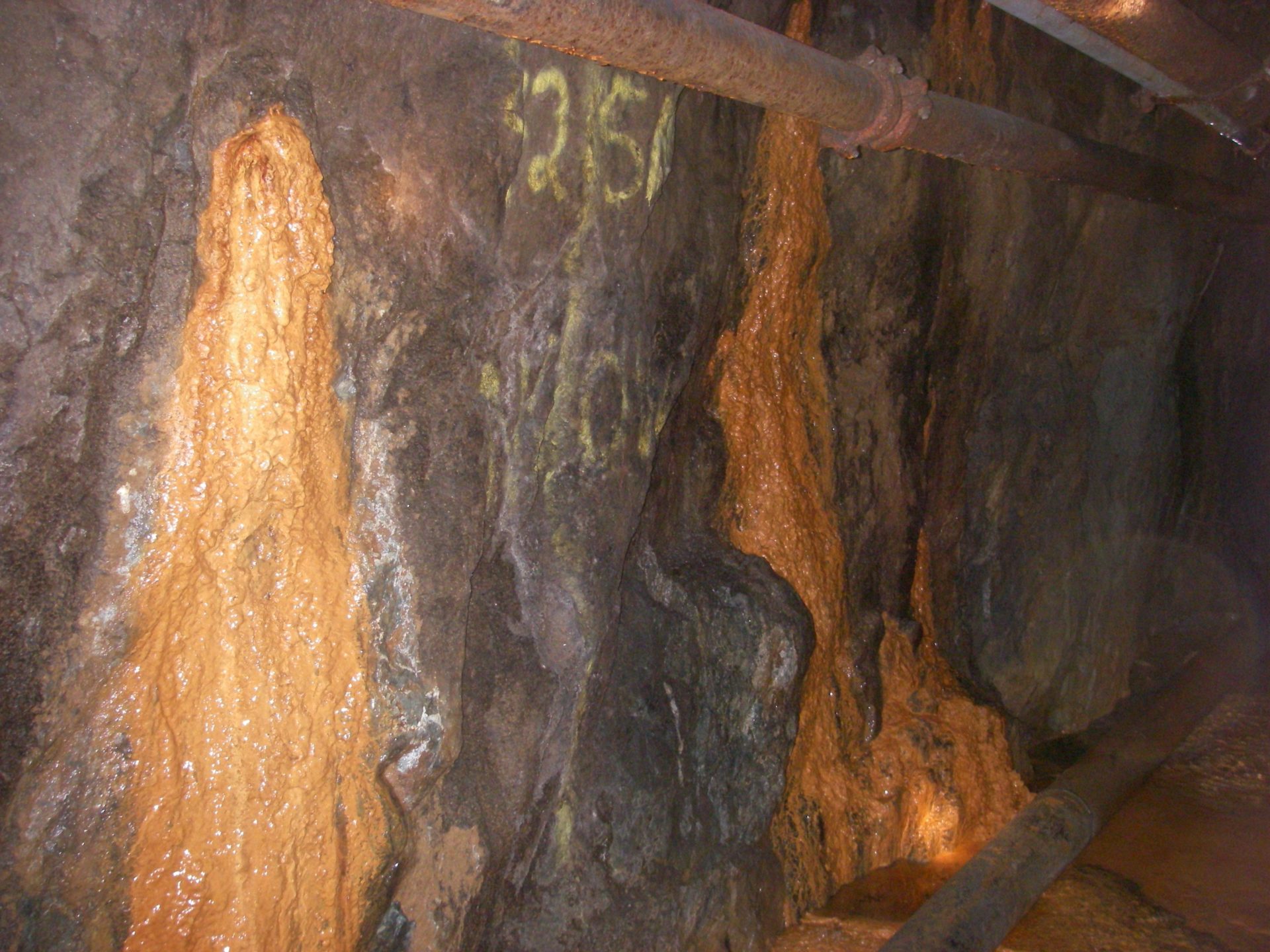
Arsenic “snot” clings to the walls of an underground chamber in Giant Mine. Photo: Heather Jamieson (Submitted)
The arsenic trioxide dust, released from the rock as it was roasted to get the gold, was pumped underground during most of the mine’s life. Better there than in the air (in the early days of the mine, it was sending up to 7,400 kg of the dust out into the environment, sickening locals and even killing a Yellowknives Dene child) but it presents its own problems underground.
Dealing with the arsenic trioxide has been the central headache for the federal government since 2004, when it took over remediation of the mine from its bankrupt owner. The dust has meant that, barring an unforeseen technological breakthrough or unthinkable disaster, there will never be an end to the government’s role in keeping the site secure.
“This will never be a walk-away solution,” Brad Thompson, senior project manager for Public Works and Government Services Canada, told a group of reporters at the mine in mid-September.
He means that the government, and therefore taxpayers, will never walk away from Giant Mine — a feat that, for its owners, took just a flick of a pen. They mined $2.7 billion worth of gold, and then Canadians were left with the billion-dollar cleanup.
“These long-term environmental legacies and financial liabilities — the ‘zombies’ that stalk northern mine sites and communities — illustrate the fundamentally unsustainable nature of extractive industries such as mining,” wrote Arn Keeling and John Sandlos in the conclusion to their book,
Mining and Communities in Northern Canada.
“[The] environmental liabilities associated with historic abandoned mines provide a potent reminder of the need for strict environmental assessment, public oversight, and regulation of new northern mineral projects in all phases of their operation.”
The Giant Mine site still resembles a mine today in the level of activity on the surface: heavy machinery rumbles up and down the long roads, piles of rock and earth hold tailings water as it’s treated for arsenic and workers mill around in hardhats and reflective vests. The billion-dollar project is ramping up as it awaits a water licence from the territory that would allow the main work to be done.
The goal, though, is to leave the site looking something like its previous form, before gold was ever discovered or mined there.
The townsite where miners and their families lived is being scraped down to the bedrock to remove contaminated soil, then refilled to create a livable neighbourhood. Even the sediment in the water will be dredged out so that people can swim there safely.
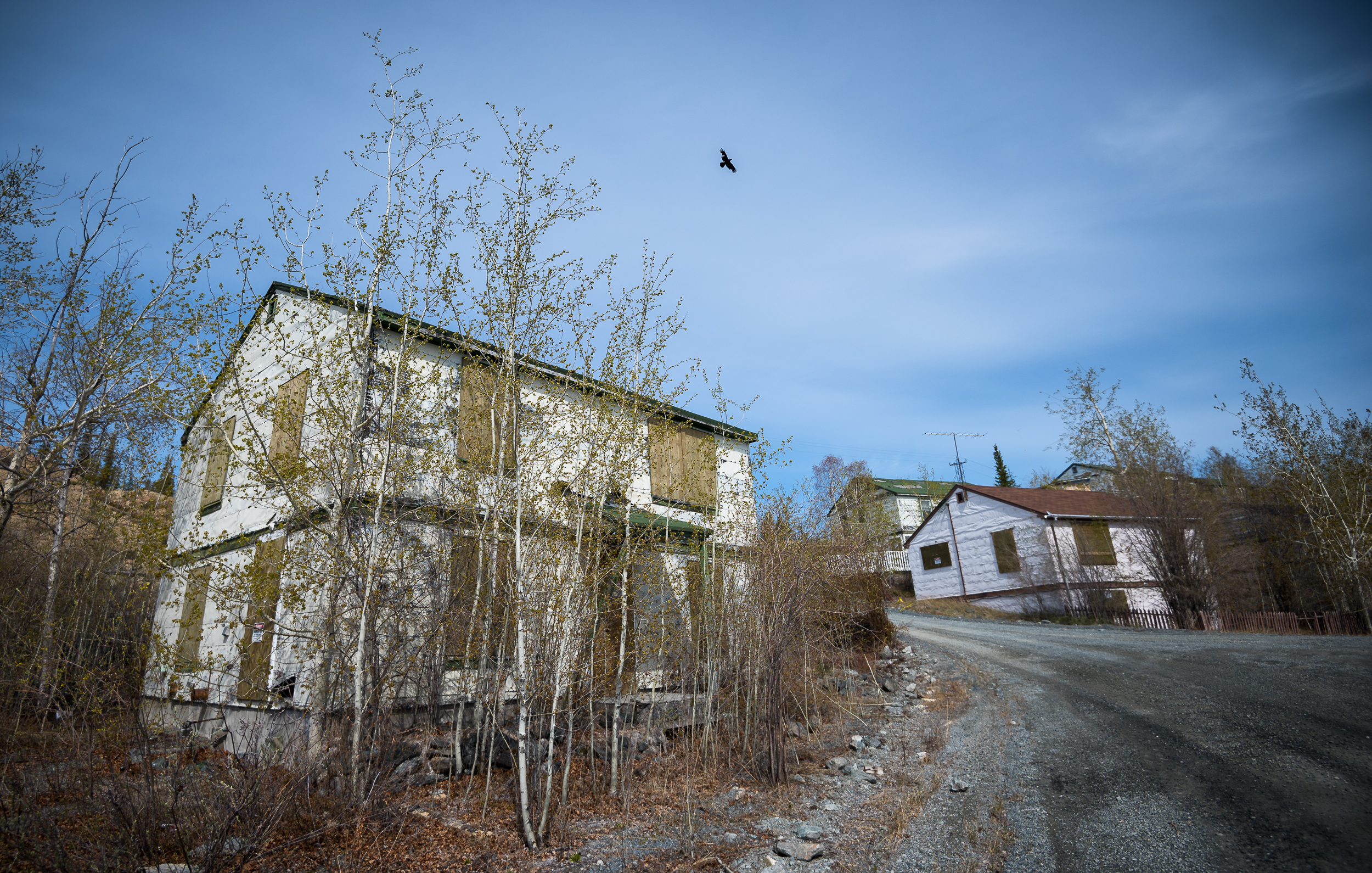
During operation, Giant Mine housed some workers and their families directly on site. Aside from cleaning the soil for arsenic, the residential area will also require removal of asbestos-filled homes; unlike the rest of the site, the townsite will be remediated to residential standards so it can one day be occupied again. Photo: Matt Jacques / The Narwhal
The residential area is at the end of Baker Creek, which runs through the site. Grayling are already swimming up the creek from Great Slave Lake and spawning there like they used to. It winds past what is currently an open pit, but which will soon be filled in; still, the creek is being rebuilt and diverted to avoid the potential for flooding the mine.
Water could transport the arsenic out of its protective chambers and into the environment, so the precautions are heavy: the engineers are preparing the new banks of Baker Creek for a flood even greater than a one-in-500-year event.
Much of the tailings rock is being stuffed back underground, filling the mine, in order to reinforce its tunnels and prevent a collapse that could prove catastrophic if it affected the chambers holding the arsenic.
One particularly large chamber — the engineers call it “the void” — is proving especially difficult to fill, requiring a thick layer of concrete as a backup to the tailings slurry.
But some of the Giant Mine site will never look the same as it did before, and that is deliberate. A working group is trying to figure out ways to warn people about the monster underground.
“If somebody were to stumble across the Giant Mine site in 1,000 years, would he or she know that the site was contaminated with arsenic?” asks a report from the working group.
Next to the 360 shipping containers containing the arsenic-coated remains of the roaster and destined to be stuffed underground, there’s a wide-open plain where the rock will be deliberately left bare, with no soil or vegetation added.
Yellowknives Dene First Nation community members asked for this in consultations, calling it “the grey and ugly.”
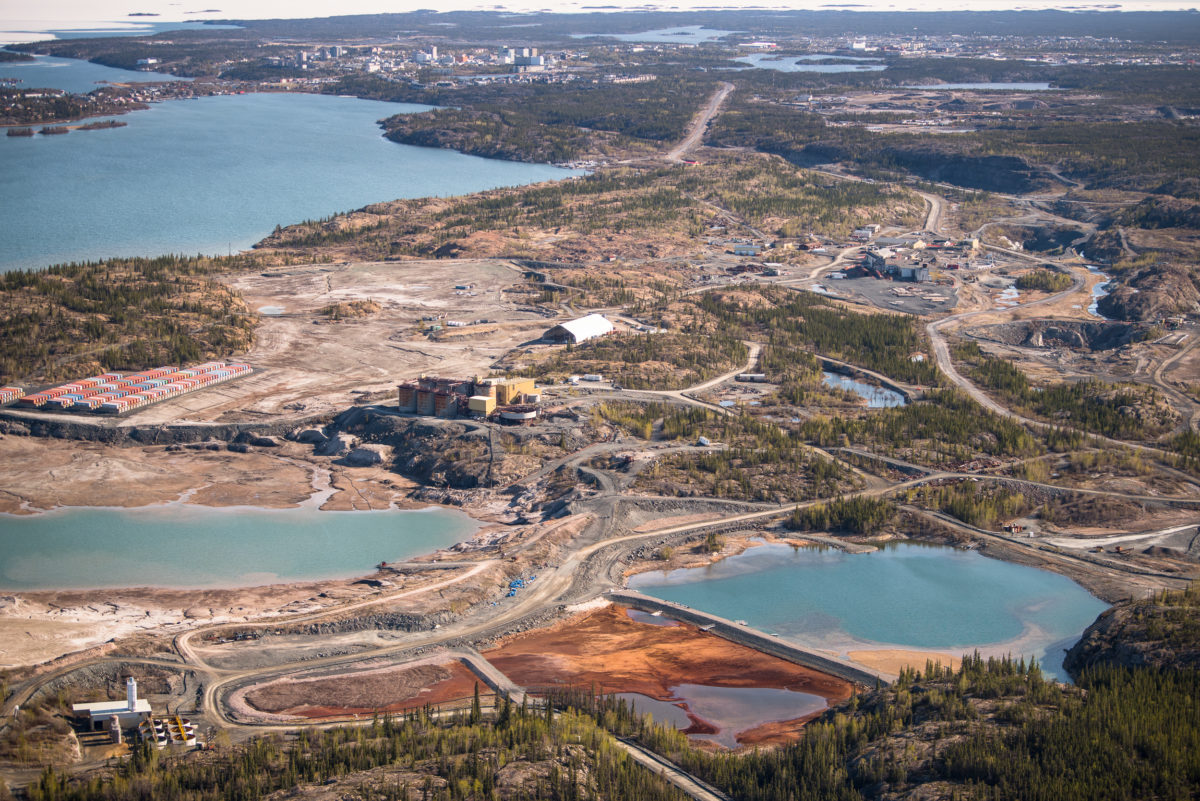
Much of the wide-open area to the left of the image will be left bare, with a rock covering meant to convey the inhospitable nature of the place to future generations. Photo: Matt Jacques / The Narwhal
It’s meant to stand as a marker to future generations — people who may not share a language, culture or semiotic understanding with those of today — that this is not a safe place. That this is somewhere to be feared and avoided.
Another area is intended to warn off future people as well. The tall pipes carrying heat from below the surface to keep the arsenic frozen in place, the thermosyphons, are presumed to be a warning sign themselves, though it’s unclear how they would seem menacing to people who may not have any understanding at all of what they are for.
Even to those who have seen them before, they could be mistaken for the thermosyphons across the North that keep foundations frozen in the melting permafrost.
The designers are still working out how to make the site look sinister, uninviting, and dangerous, informed in part by the design of a nuclear storage facility in New Mexico.
Giant mine is not alone as a contaminated site left behind for future generations to pay for. The North is riddled with them.
In mid-September I’m part of a small group of reporters arriving by bush plane at the Bullmoose-Ruth site, a complex consisting of several gold mines and exploration sites that were operational in the 1940s through to the 1980s. From the plane, we board a helicopter — the site is so vast that one aircraft gets us to the site while the other gets us around it.
The sprawling site today consists of filled-in mine shafts and deep trenches, scoured-out soil and backcountry landfills.
Like Giant mine, and like hundreds of smaller sites across the North, it was left in a state that posed risks to wildlife, to humans and to the environment.
Fuel drums were left rusting and leaking, holes were left gaping in the ground over 600-foot drops while equipment, vehicles and piles of trash were scattered across the site.
It was a big job in a remote area, requiring new ice roads and camps to be built in the bush.
At the Ruth mine site, the contaminated soil was scraped down to the bedrock and replaced with sand left behind by the last glaciation while three Olympic swimming pools’ worth of soil was treated and buried in a landfill.
The government decided to bury it on site instead of risking further contamination along the ice road; and besides, what do you do with that much hazardous material back in the city?
Messes like this are a holdover from when the world was thought to be big enough to treat this way — when the planet had no limits and the consequences of far-away activities bore no consequence to the folks back home.
Miners could drill holes and leave piles of ground-up toxic waste, tangled steel and even boxes of dynamite behind with no deposit against the cost of cleanup.
They could build roads and camps and have the luxury of believing they would have no lingering effects on the animals whose habitat was being fragmented and opened to new predators.
Finally, when the company went bust, they could walk away, dust off their hands and start digging someplace else.
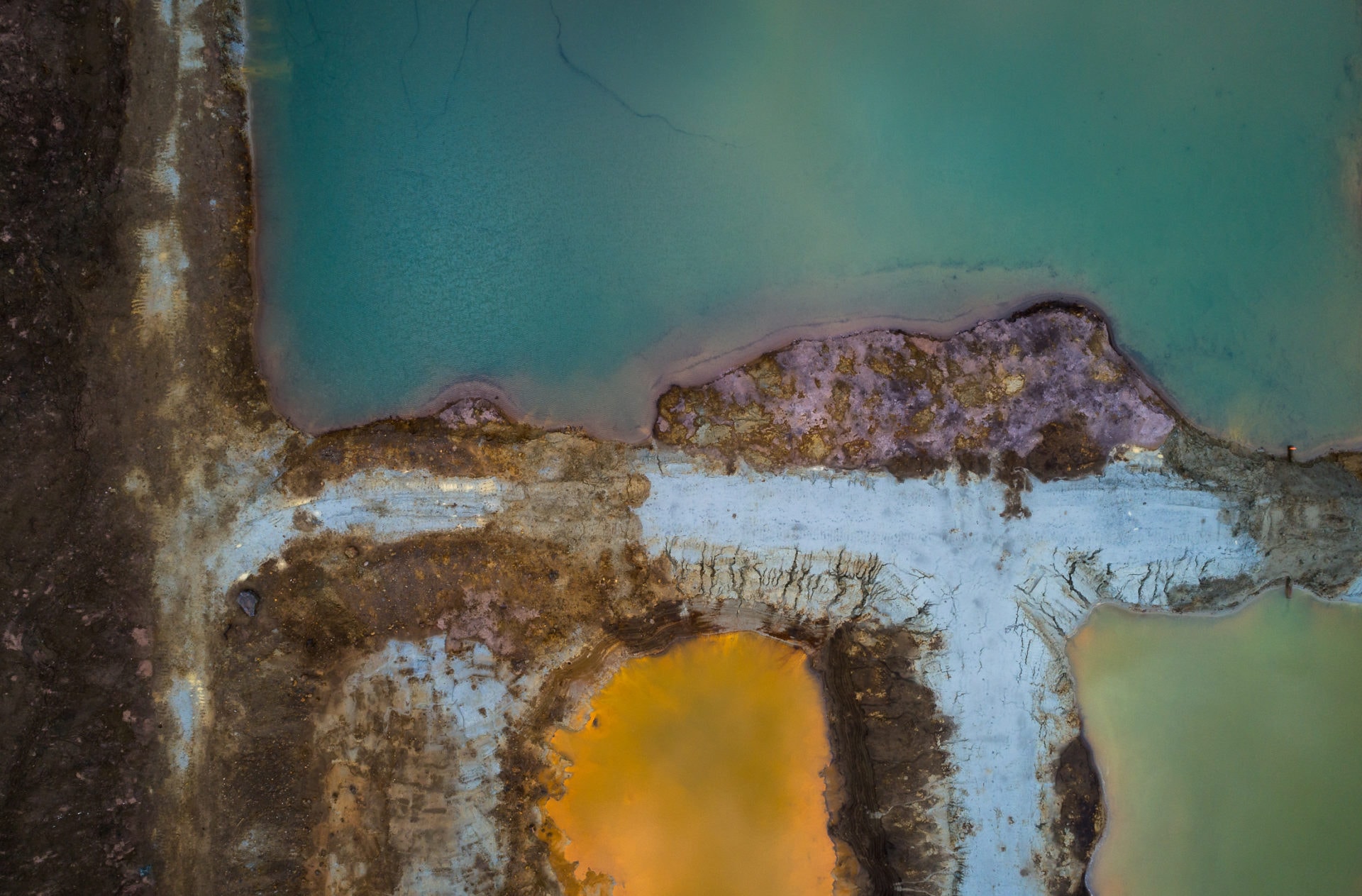
The Faro Mine was once the world’s largest open-pit lead and zinc mine. The mine’s tailings pond stretches five kilometres along the Rose Creek valley. Photo: Matt Jacques / The Narwhal
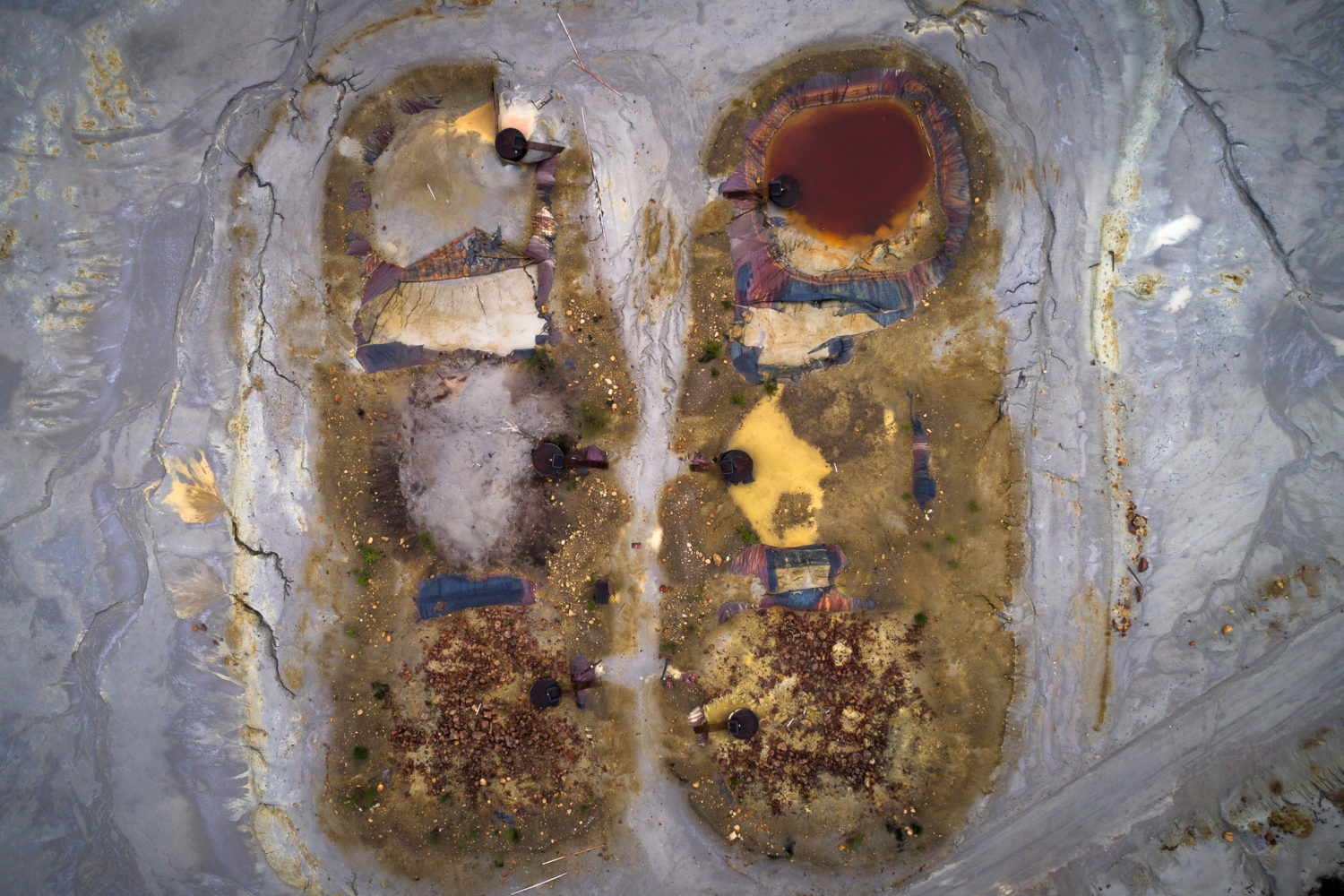
When the owners of the Faro Mine declared bankruptcy in 1998, the company left behind more than 320 million tonnes of waste rock and 70 million tonnes of tailings. Photo: Matt Jacques / The Narwhal
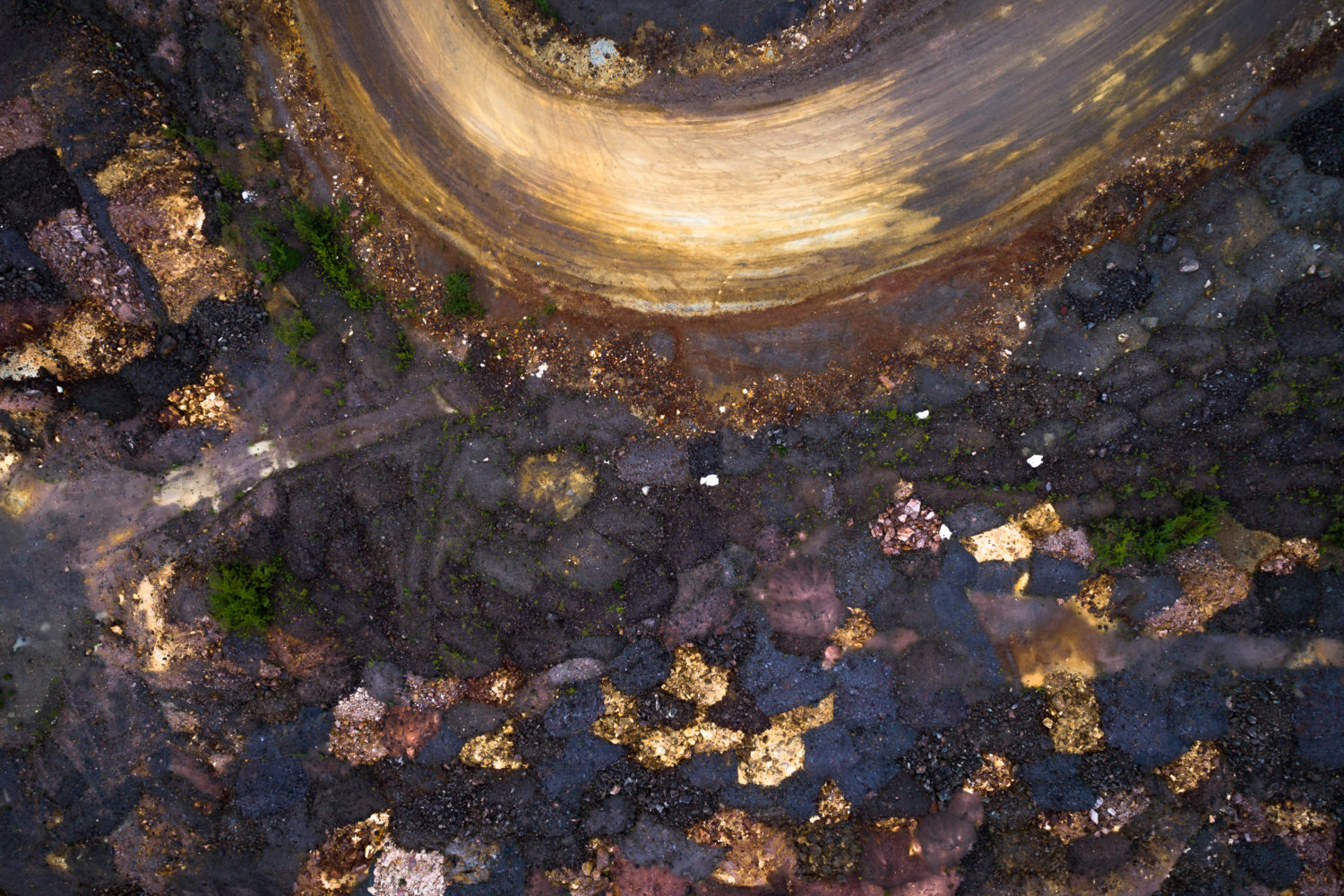
After nearly 20 years of maintenance and remediation planning, more than $350 million has been spent via the Federal Contaminated Sites Action Plan but remediation isn’t expected to actually begin until 2022. Photo: Matt Jacques / The Narwhal

Adjacent to the mine site, Rose Creek winds through a wetlands ecoystem that feeds the Pelly River. Without remediation the Pelly and Yukon Rivers could become contaminated by toxic metals from the Faro Mine. Photo: Matt Jacques / The Narwhal
It happened at Giant Mine, it happened at Faro mine, it happened at Bullmoose, Colomac, Tundra, Eldorado, and so many more across the vast North that a $2.37 billion cleanup program has been established to deal with it all.
That’s enough money to operate the entire Northwest Territories government — its schools, roads, hospitals and all — for a year and a half.
It’s not that it isn’t needed now, or being spent appropriately (a 2016 audit found the Northern Contaminated Sites Program to be running almost flawlessly) but it’s a cost that never needed to be borne by taxpayers had there been adequate regulations in place.
Despite finishing ahead of schedule and under budget, the cost to clean Bullmoose-Ruth will be more than $20 million by the time the project wraps up. Even then, it will still require monitoring: the dams built to control water flow will need to be checked on and maintained forever.
“The mining industry often invokes the words reclamation, remediation, and restoration as a cornerstone of efforts to paint itself green,” wrote Keeling and Sandlos in a 2013 paper. “But such emphasis on the visual aesthetics of remediated landscapes obscures as much as it reveals about abandoned mines. As important as it may be to repair the uglier side of extensive, open-pit mining operations, in many cases it is the unseen (or more accurately, the unseeable) impacts of mining that pose the gravest long-term threat to ecological and human health.”
As we leave one part of the far-flung site in the helicopter, a government official points out the aircraft window at rusted fuel barrels that were discovered after the cleanup finished.
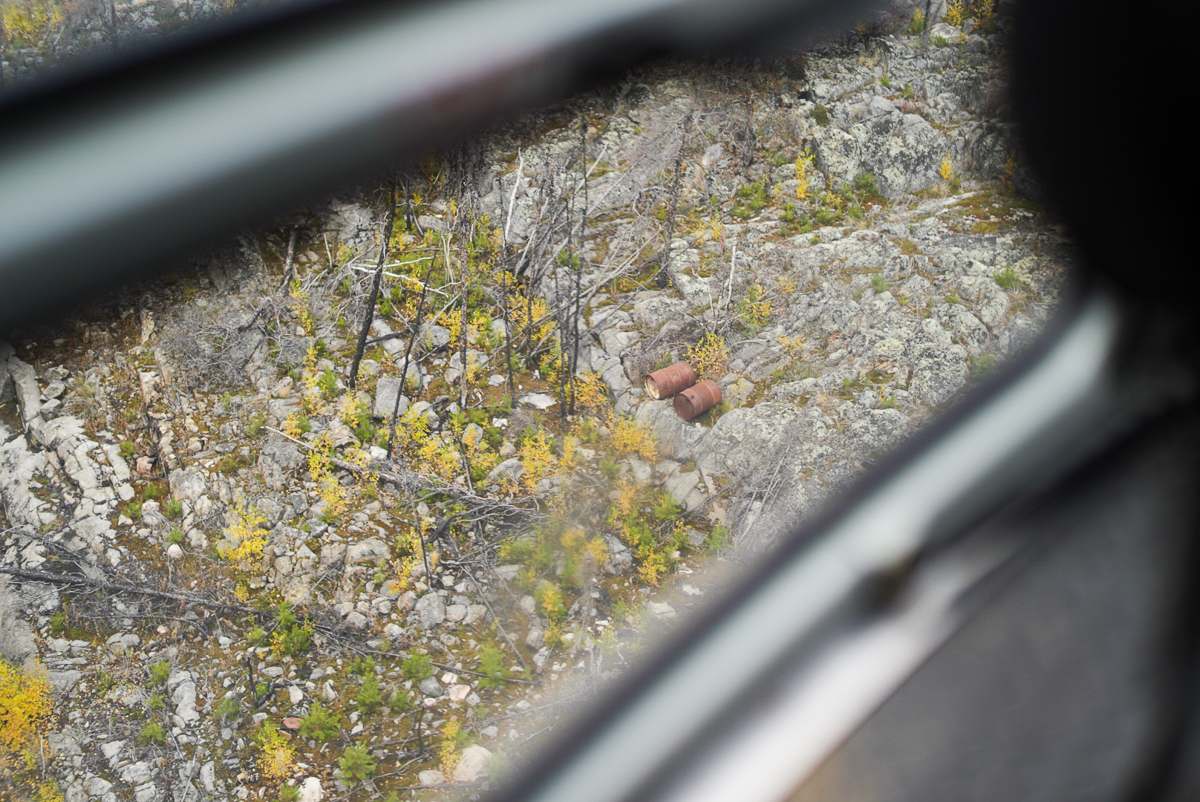
Two of the three barrels that were discovered just outside the area of the remediation contract after the remediation finished. Photo: Jimmy Thomson / The Narwhal
They, along with other debris that’s still being discovered, will have to be airlifted out. Even the cleaned-up parts of the site bear the markings of a heavily disturbed landscape, cut up and bulldozed.
We take off from a cleared area between the landfill and a wetland water treatment project. The wash from the propellers blows a cloud of dust across a square test area not much larger than an ambitious home garden, where a few seedlings are taking root.
In a new approach to revegetation, the seeds being planted here aren’t brought in from the south, or grown in nurseries; they’re collected from the trees immediately surrounding the patch. Using the most local seeds possible makes sure the plants that will grow there are the right ones for that particular area, and it gives them the best chance to take root and thrive.
Even so, plants grow slowly in the North, stunted by the cold and the dry air and the wind that whips past the nutrient-poor soil.
It will be decades before the shrubs and grasses and trees grow back to cover the bare ground, and much longer before the site looks anything like it did before its short stint as a mine turned it upside down.
If it ever does.
Get the inside scoop on The Narwhal’s environment and climate reporting by signing up for our free newsletter. Angello Johnson’s shoulders burn, and his arms...
Continue reading
First Nations are leading efforts to make sure lake sturgeon can find a home in...

We’re excited to share that an investigation by The Narwhal is a finalist for the...

A new documentary, Nechako: It Will Be a Big River Again, dives into how two...
